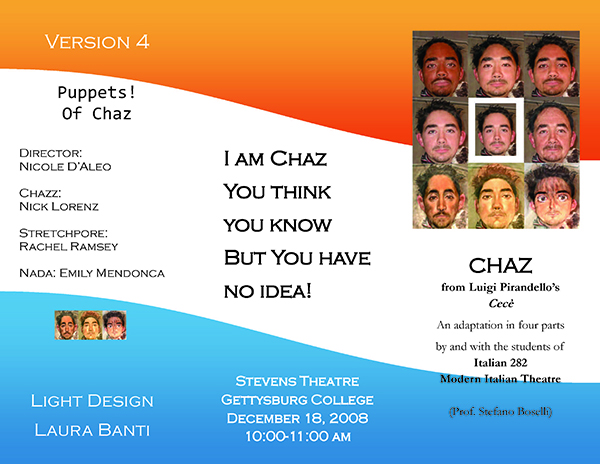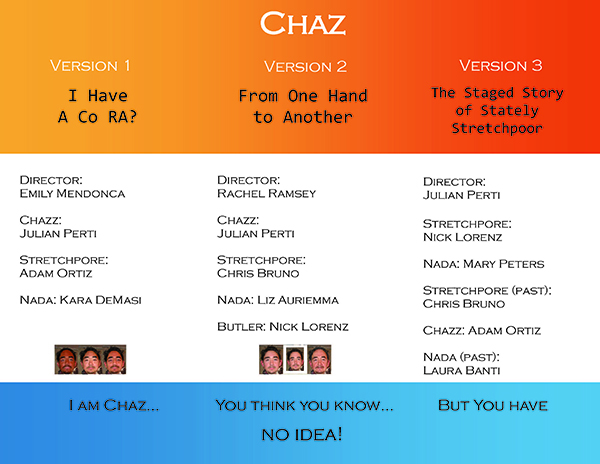One of the key ingredients of my teaching is the necessity for actors to constantly fine-tune their instrument at all stages of their career.
An essential skill to develop is the ability to function creatively as part of a larger ensemble, a notion that has been extremely relevant in the tradition of European theatre, but has so far gained relatively little traction in the US.
This course is designed to make you acutely aware of your multiple acting partners through training exercises that engage your physical, mental, and emotional presence on stage on several levels. You might find yourself overtly looking for a partner for a particular stage action, while secretly trying to find another, exchanging lines with yet another actor, and simultaneously keeping track of a prop circulating among members of the ensemble. Eventually, you will be able to collectively perform a “marathon” that weaves together several actions and texts in ways that would have been impossible through traditional rehearsal methods.
The course also guides you through exercises that provide an embodied experience of what energy on stage means, how it can be created, sustained, channeled in particular directions, exchanged with partners, increased or softened depending on your creative intentions. Eventually, you realize how much more intense and mesmerizing an ensemble can be compared to what performers can do when they work only as self-contained units.
These tools can then be applied to devising scenes from prose works or staging dramatic texts in less obvious configurations. You will find that all take on new life, beyond the explicit elements provided by the author, by tapping into energetic currents and flows produced by the ensemble.
Textbooks
Alschitz, Jurij. Training forever! Berlin: European Association for Theatre Culture, 2013.
Wilde, Oscar. The Portrait of Dorian Gray (any edition).
Fitzgerald, F. Scott. The Great Gatsby (any edition)





